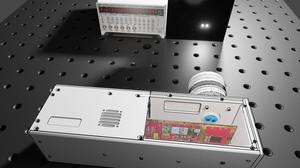Timepix3: single-pixel multi-hit energy-measurement behaviour
13 November, 2024
The event-driven hybrid-pixel detector readout chip, Timepix3, has the ability to simultaneously measure the time of an event on the nanosecond timescale and the energy deposited in the sensor. However, the behaviour of the system when two events are recorded in quick succession of each other on the same pixel was not studied in detail previously. We present experimental measurements, circuit simulations, and an empirical model for the impact of a preceding event on this energy measurements, which can result in a loss as high as 70%. Accounting for this effect enables more precise compensation, particularly for phenomena like timewalk. This results in significant improvements in time resolution — in the best case, multiple tens of nanoseconds — when two events happen in rapid succession.
We have uncovered critical details about the Timepix3 hybrid-pixel detector chip, addressing how it measures events that follow one another at short intervals of time. Our findings, published in Journal of Instrumenation, reveal that energy readings for rapid successive events on the same pixel can be underestimated by up to 70%, impacting time and energy precision.
Using experimental data, circuit simulations, and an empirical model, our team developed real-time corrections that dramatically improve time resolution, often by tens of nanoseconds. These enhancements mitigate timewalk effects and optimize Timepix3’s performance for applications in high-energy physics, medical imaging, and beyond.
This research not only advances the understanding of Timepix3 but also offers practical tools to refine its capabilities, setting the stage for improved designs in future detectors.
